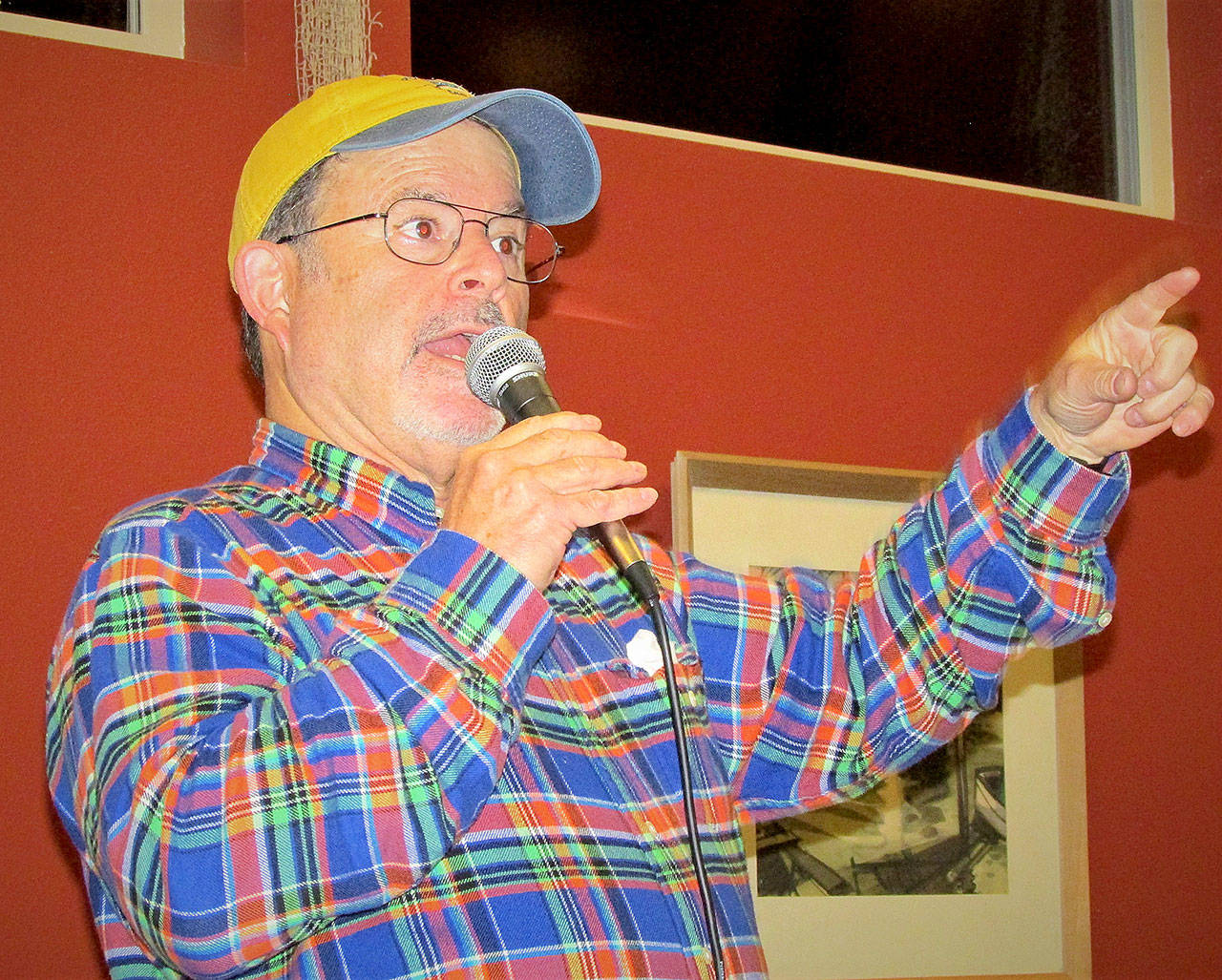By SCOTT D. JOHNSTON
Unless the wind is howling, the rain is falling sideways, and the ocean is obviously angry, thousands will be on all four ocean beach areas on the Washington Coast Sunday evening to enjoy the unique holiday tradition of digging for razor clams on New Year’s Eve.
The state’s Department of Fish and Wildlife (WDFW) has announced digs, pending final toxin tests, for Sunday, Dec. 31, in the hours leading up to the 5:12 p.m. low tide that is -1.2 feet, for Copalis and Mocrocks, the two North Coast beach areas, as well as Twin Harbors and Long Beach to the south. The dig continues at Mocrocks and Twin Harbors only on New Year’s Day, Monday, Jan. 1, on the 6:02 p.m. low tide of -1.7 feet.
Alan Rammer, the marine educator who retired in 2009 from a 35-year career with WDFW, explained to a crowd at the Coastal Interpretive Center’s “Glimpses” lecture last week the complex mix of factors that goes into determining state-approved dates for digging razor clams, which generates $30-40 million in annual economic activity. And tradition really doesn’t have much to do with it.
The single biggest factor, and the one that cannot be controlled, is the moon. Rammer reminded folks that the combined gravitational effect of the sun and the moon creates ocean tides, and about two-thirds of that effect is from the moon, as it is much closer to the Earth.
Much of Rammer’s talk included humorous anecdotes from his decades of face to face encounters with clam diggers. “A common theme is they don’t like night time digging,” particularly in the winter, he said.
The explanation that lower tides come in the evenings in fall and winter and in the mornings in spring and summer doesn’t always satisfy. Rammer said Wildlife agents have been accused of forcing evening digs “so we could keep all the clams for ourselves,” he chuckled. And there was the guy who just wasn’t buying that whole moon thing: “He said, ‘You’re in charge! Do something about it!’”
(Actually, WDFW may pick a slightly less than ideal dig date to match up with a
holiday or an event, like the Razor Clam Festival in Ocean Shores each March. But they can only go so far. For example, a dig on New Year’s Eve next year is unlikely, as the low tide is not very low at +1.5 feet. A Christmas Eve dig seems a stronger possibility with the low tide at -1.9 feet.)
Another huge factor, Rammer related, is how many clams there are to harvest. Technology has greatly improved the ability to forecast clam population and size, both critical elements in setting harvest limits.
Honored as the National Marine Educator of the Year in 2012, Rammer also explained that a “submarine canyon” has been discovered just offshore near Copalis Rock, south of Iron Springs. “It’s believed that the entire Washington Coast razor clam fishery is populated by this nursery area,” he said.
They spawn in the spring and summer and are carried north and south by currents until around 9 months of age, when they settle into the sand and live there for the remainder of their 5-6-year lifespan. It takes about 2 ½ years for razor clams to grow to a reasonable harvest size, around 4 inches. They continue to grow very slowly for the rest of their lives.
A third critical factor, Rammer said, is whether you will get sick or die from eating them. After the first cases of poisoning from the deadly shellfish toxin, domoic acid, were reported in far eastern Canada on Prince Edward Island in 1986, Washington began testing clams just before each harvest date, and has cancelled individual digs and even entire seasons, such as Twin Harbors, where no clams were dug at all in 2016.
The combination of everything, plus federal court rulings extending tribal fishing rights to shellfish, creates an equation that ultimately yields a schedule of tentative razor clam dig dates which is changeable, but manageable, Rammer observed.
He also noted, “It takes everyone to cooperate to preserve the resources,” a reference to his many experiences with poachers, some of whom have been caught with hundreds of clams above the limit of 15 per person. He said his all-time biggest bust took place in the late 1980s, when he saw an elderly couple kind of “waddling” to their vehicle. “They had two limits in their sacks, and 422 stuffed in their waders!”
The Glimpses lecture series benefits the Coastal Interpretive Center in Ocean Shores. Lectures are $10 and take place at 6:30 p.m. on the third Thursday of each month through March at the Home Port Restaurant, 857 Pt. Brown Ave. NW. On January 18, marine resources scientist Joe Schumacker will speak on “Nautilus Live and the Quinault Canyon Exploration,” which Rammer referenced as the razor clam nursery area on the North Coast.



